Schrödinger’s Locke
Locke’s premise was deceptively simple. The law protects our freedom.
English philosopher John Locke’s Second Treatise on Government (1690) was one of the primary ideological guideposts for the Founders of the United States. Locke’s work was passed out and quoted by Samuel Adams in the years before the American Revolution. Numerous concepts and phrases from Locke’s work are echoed outright in the founding documents—including the idea that all people have the natural right to “life, liberty, and estates.” And Thomas Jefferson wrote in 1789 that Locke was one of the “three greatest men,” along with Sir Francis Bacon and Isaac Newton.
Locke’s Simple Premise
Locke’s basic premise was deceptively simple. The law protects our freedom.
“the end of law is not to abolish or restrain, but to preserve and enlarge freedom: for…where there is no law, there is no freedom.”
The corollary to this is that a government, according to Locke—and the leaders of the American Revolution—is only valid insofar as it protects the freedom of the people. When power is used “not for the good of those who are under it,” that power becomes tyranny.
“As usurpation is the exercise of power, which another hath a right to; so tyranny is the exercise of power beyond right, which no body can have a right to; and this is making use of the power any one has in his hands, not for the good of those who are under it, but for his own private separate advantage.”
Locke goes further to say that those who use their power to project illegal force “under his command” onto the people, forfeits their legitimacy.
“Where-ever law ends, tyranny begins, if the law be transgressed to another’s harm… [whoever] makes use of the force he has under his command, to compass that upon the subject, which the law allows not, ceases in that to be a magistrate.”
Finally, when tyranny becomes institutionalized, and the social contract is broken, Locke says this amounts to a “War with the People,” and dissolves that government.
“whenever the Legislators endeavour to take away, and destroy the Property of the People, or to reduce them to Slavery under Arbitrary Power, they put themselves into a state of War with the People, who are thereupon absolved from any farther Obedience.”
Jefferson wrote this into the Declaration of Independence nearly verbatim, saying that it is not just the right of the people to throw off such a tyrannical government—but their duty.
“But when a long train of abuses and usurpations, pursuing invariably the same Object evinces a design to reduce them under absolute Despotism, it is their right, it is their duty, to throw off such Government, and to provide new Guards for their future security.”
The United States, 249 years after those words were written, must now grapple with their meaning once again. It is important to remember that these are not just words, they are instructions for future generations—they are a warning created and repeated by imperfect people who knew that governments can and do go wrong.
The Founders wrote down the diagnostic criteria for tyranny—and the cure—for future generations to remember. Then they used it for themselves to declare independence—and fought a bloody Revolution to keep it.
Tyranny of the Mind
Locke was not just a philosopher of political systems. His ideas of government derived from core principles about how personal identity is formed. Locke’s view, contrary to most popular thought at the time, was that all humans are tabula rasa, a blank slate at birth—and that experience and memory create who you are. This is how a community of people with a shared identity, or a “commonwealth,” is created—through shared memories. This is why education was so important to Locke, and to the Founders.
“The preservation of the means of knowledge among the lowest ranks is of more importance to the public than all the property of all the rich men in the country.”
John Adams, 1785
“If a nation expects to be ignorant and free, in a state of civilization, it expects what never was and never will be.”
Thomas Jefferson, 1816
“The preservation of the means of knowledge” is an explicit call to avoid epistemological totalitarianism, a direct warning that tyranny starts and ends with controlling the mind. To the Founders, and to Locke, freedom and ignorance were incompatible.
Schrödinger’s Locke
The Trump regime is currently executing a historically brazen, explicit and rapid transformation of a major world power from a relatively free nation to one captured by exactly the sort of tyranny Locke and the Founders so carefully cautioned against. This isn’t a change in party within a government, it’s a change in the very premise of what government does.
What are the criteria for a diagnosis of tyranny by the people who invented our form of government?
Illegal exercise of power or force against the people
Use of the government for personal gain at the expense of the people
Destroying the property of or enslaving the people
Engaging in abuses and usurpations, or despotism
Denying people “the means of knowledge”
It is hardly worth arguing to my readers that each and every one of these symptoms are present. The Trump regime so far, to many Americans, is the very definition of all of these things in action.
As a small example, yesterday in the gilded Oval Office with corrupt FIFA president Gianni Infantino—after proudly posing with a photo sent to him by Vladimir Putin—Trump promised to send National Guard troops into American cities against their will. This was racist, fascist performance art.
“This will be one of the safest places anywhere on Earth. So, you know, I really am honored that the National Guard has done such an incredible job working with the police. And we haven't had to bring in the regular military, which we're willing to do. We have to. And after we do this, we'll go to another location. And we'll make it safe also. We're going to make our country very safe. We're going to make our cities very, very safe. Chicago is a mess. You have an incompetent mayor, grossly incompetent. And we'll straighten that one out probably next.”
Nevertheless, despite the very clear “cure” provided by America’s forefathers, there has been no revolution, nor even a true popular recognition that we have descended into actual tyranny. The government still operates, in a way. There are outward signs of a functioning government which pretends it operates in the best interests of the people. Society has not collapsed.
This paradox is what I’m calling Schrödinger’s Locke.
Without getting into quantum mechanics, Schrödinger’s Cat is a famous thought experiment which posits that a cat can be actually alive and dead at the same time, according to the real laws of physics.
In the same way, the Lockean paradigm of government and the rule of law—that it should increase the freedom of the people, not take it away—is both alive and dead at the same time. The Trump regime is a tyrannical government acting as a constitutional republic AND it is a constitutional republic behaving tyrannically. As in quantum physics, which one it is depends on how, and when, you observe it.
Collapsing the Cat
Confusingly, the way you find out whether Schrödinger’s Cat is alive or dead is to find out whether it’s alive or dead—but not for the reasons you think. Technically, it is the observation of the cat that triggers reality to figure out what happened to it. The fact that you measure it, makes it measurable.
So in this analogy, if you are captured in Trump’s version of reality, what you are observing in the government is a live Lockean cat—nothing wrong with it. Cute kitty. If you have not given up your ability to test objective reality, however, you are seeing a dead cat government—a masquerade ball for despotism.
As a symbolic representation of this duality, note Donald Trump‘s hat which is a direct translation of Mussolini’s infamous slogan “Mussolini ha sempre ragione”—“Mussolini is always right.” Behind his hat, however, you can see a statue representing US Marines raising the flag at Iwo Jima. This is Schrödinger’s Locke.
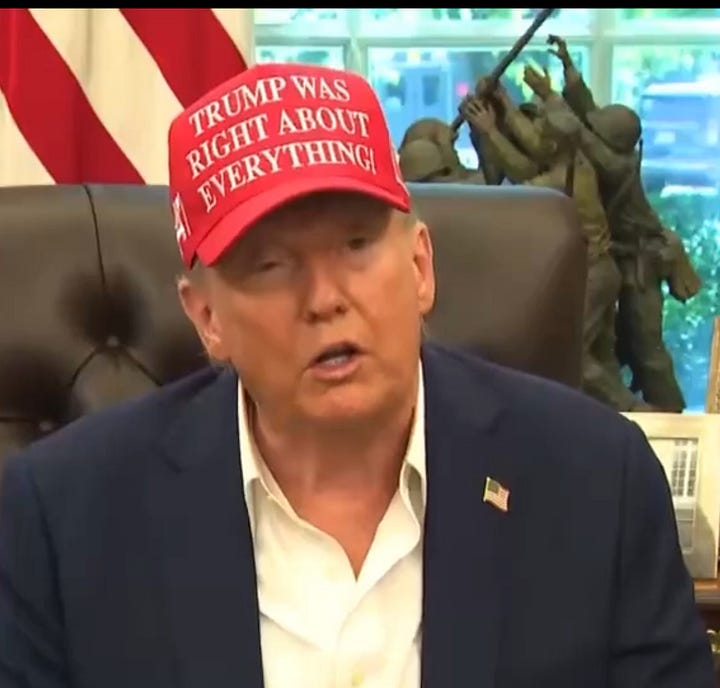
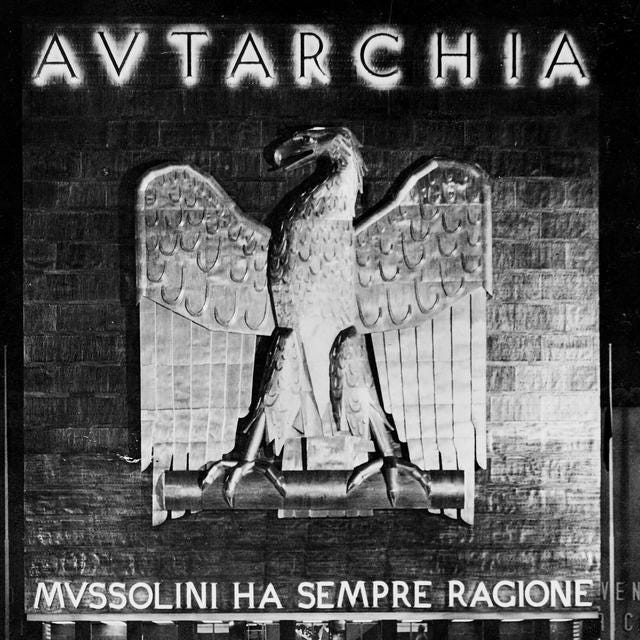
Breaking the Locke
How does the world resolve this optical illusion—where half the people see the government one way, and the other half the opposite. Some people may remember “the dress” an online viral phenomenon from a decade ago. Half the people saw a blue and black dress washed out by light, others saw a white and gold dress in shadow. There is a straightforward explanation for this but the difference in perception between any two random people was quite literally night and day.
And so it is with the rule of law, and the freedom it is meant to create. Seen from one set of eyes, America is back, never better, never stronger. But from another, America is already dead, a ghostly apparition pantomiming the rituals of democracy.
In fact, the dress was blue. You cannot (successfully) argue with objective reality. Like the dress, the truth is one: America has fallen to tyranny. The Cat is dead. The Locke has already broken.
The Founders gave us the diagnostic criteria in advance, and we failed to heed their warning. But their most important gift of all, perhaps, was the solution.
“It is their right, it is their duty, to throw off such Government.”
If you are able to help me continue my work, please consider upgrading to a paid subscription. It really means a lot. Thank you!
Here are a few benefits to upgrading:
Live Zoom call each Sunday
Ability to comment and access all content
Wonderful, supportive community
Helping independent journalism fill in the gaps for our failing media
Thank you for reading and sharing my work. Grateful for your support.
If you’d like to help me with expenses, here is my DonorBox. 💙
If you’d like to help with my legal fees: stopmikeflynn.com.
My podcast is @radicalizedpod & YouTube — Livestream is Thursdays at 4PM PT.
Bluesky 🦋: jim-stewartson
Threads: jimstewartson


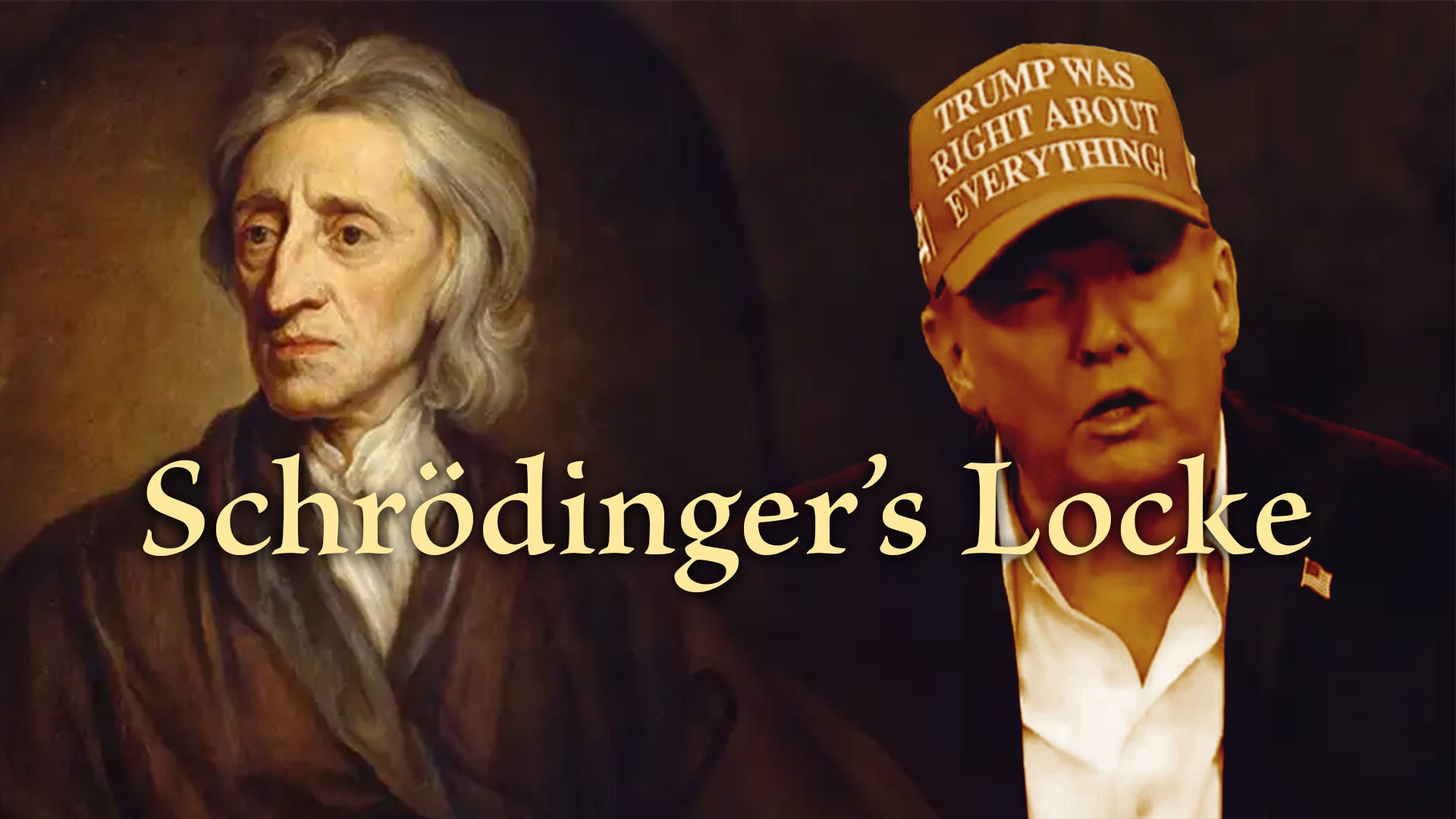
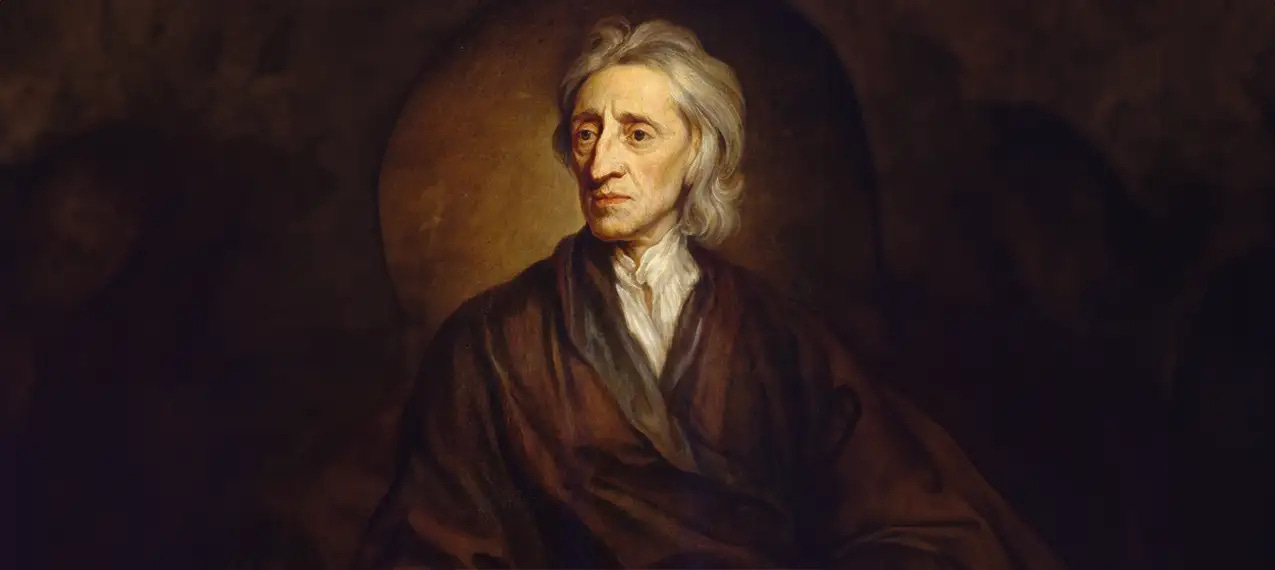
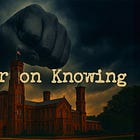
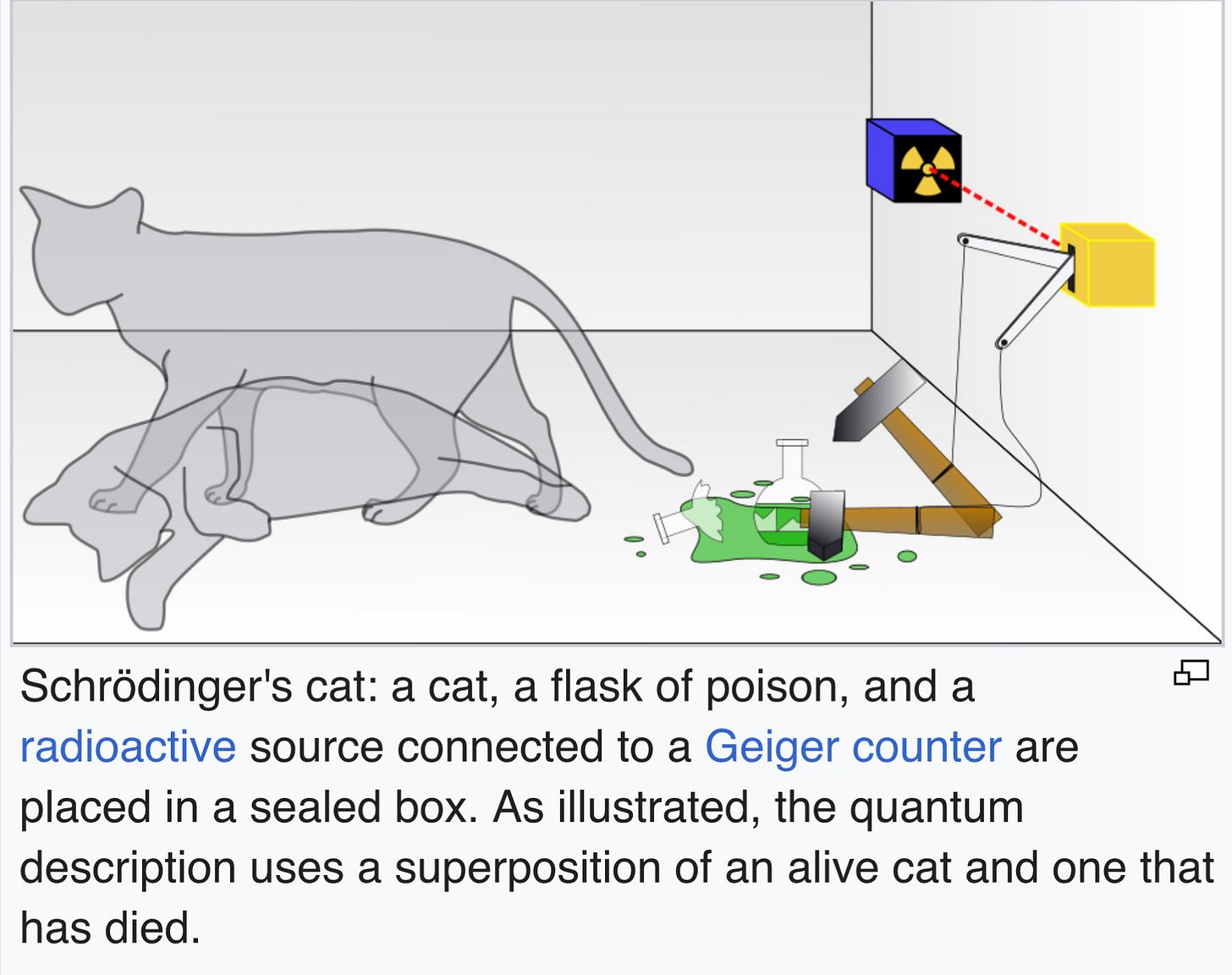

We know what must be done. We know why. As for who, it is by anyone who is willing and able. The question of when has also been answered by plain evidence. It was some yesterdays ago. Perhaps, it even begun on Day One when an insurrectionist swore an oath to uphold the U.S. Constitution as President and then commuted or pardoned all criminals involved in that very same insurrection. Remaining questions are how and where. Do we march and mass like ants relentlessly and persistently? Or by some other way? Let's say, for example, by strikes. Well then, how and where? If coming together in a procession of millions, then where do we meet? In DC? The outer perimeter of the White House? At the Lincoln Memorial? At the Washington Monument? Until these questions are answered definitively, how is it possible that what is called for can materialize? The same calls to a general solution may be made over and over; but if there is no plan for specific actions that can be followed and pursued until success is obtained, a state of suspension continues and further damage occurs.
Excellent analysis. You might not have a college degree, but you are one of the smartest people around. Thanks.